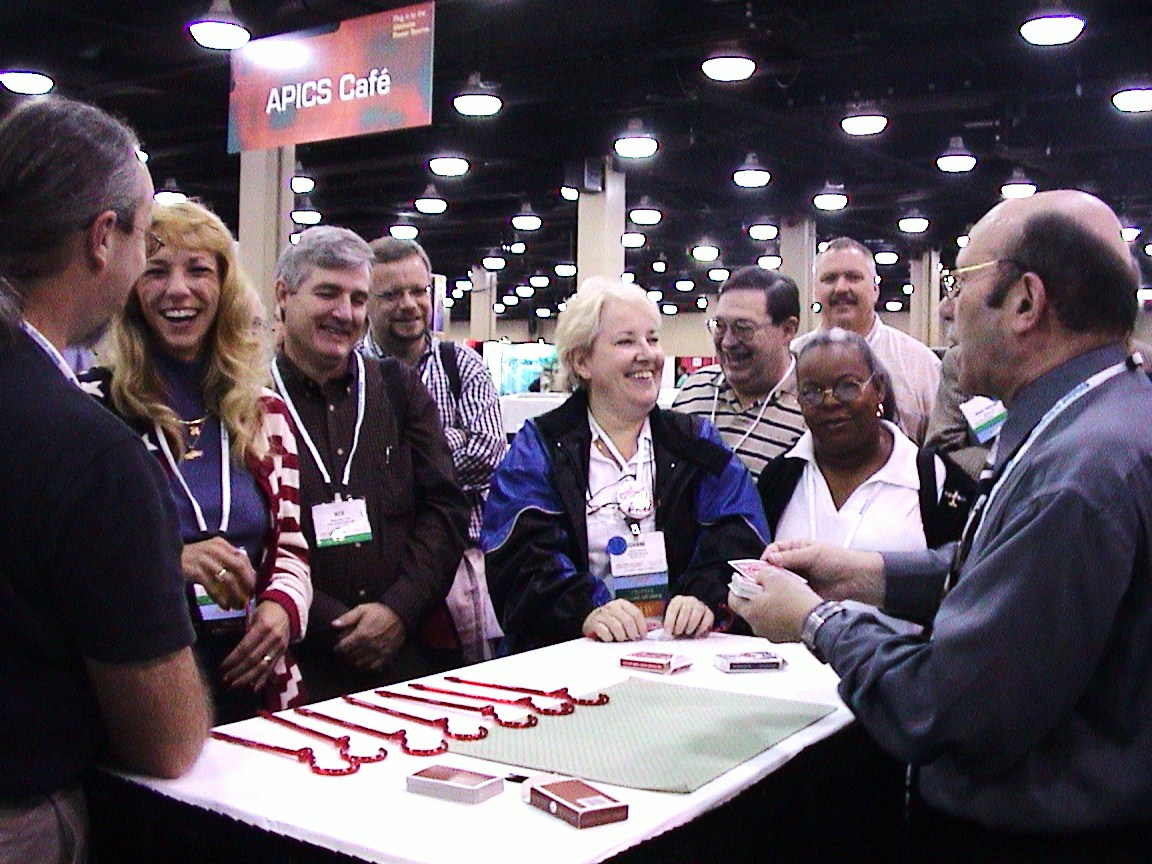
This is a pretty old book on Trade Show Magic and in fact is one of the first I ever read. It was written by Bud Dietrich and Dick Jarrow. Dietrich was a leading trade show magician with a sterling reputation. Mind you, I still remember one thing that I heard which I always remembered about him. He did many shows for Hoyle Playing Cards which were manufactured by Stancraft. In fact he was known as “Mr Hoyle” and he was certainly one of the most important trade show magicians around at that time. Now, in the seventies I also did trade show work for Hoyle when the product line was first introduced to Canada.
Naturally I asked about Bud Dietrich and one rep complained, “Bud was great but there was only one problem. We couldn’t get him to stop because he was such a ham!. The salesmen couldn’t get a word in edgeways!” I have always remembered that remark in my own work and make sure I don’t get in the way myself! After all the main purpose of a trade show magician is not so much the entertainment but to assist the sales people by gathering a crowd and conveying the features and benefits of the product to the attendees in an entertaining manner.
Having said this Bud Dietrich must have done something right since he was always busy and was one of the highest paid performers in this particular field.
But back to the book. Alas I don’t know much if anything about the other author Dick Jarrow so regrettably I can’t tell you much about him.
I was never able to get much out of the book when it first came out as the concept of performing magic at a trade show was not familiar to me and the book was written as if I should know all about it already. However, much later on the book made more sense to me and as a result became more useful. It talks about microphones, sales meetings and hospitality rooms and other kindred subjects. I think one feature of the book which no other book of this kind possesses is that it actually has a few chapters for the exhibitor who books the magician rather than for the performer himself.
As usual the book tells you nothing about how to book the show in the first place.
Overall, a book that deserves to be in the library of every trade show magician.
